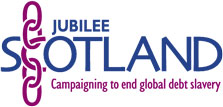
Conditionality
|
After considerable pressure from campaigns across the world and a series of high profile financial disasters, the World Bank and IMF changed policies and, at least on the surface, began to work with poor countries in creating a more partnership led approach to conditionality. However, studies have shown little difference to this new approach compared with the dreaded Structural Adjustment Policies of the 1980’s. Recent Reports on Conditionality DFID
Partnerships for Poverty Reduction: Rethinking Conditionality 2005 The
World Bank policy scorecard:The new conditionality? Indispensable
or unworkable? The IMF’s new approach to conditionality DRAFT
ISSUES PAPER FOR AN EVALUATION OF STRUCTURAL CONDITIONALITY IN IMF-SUPPORTED
PROGRAMS Review of World Bank Conditionality NGOs
respond to UK paper on conditionality Analysis
of IMF 2004- 2005 Conditionality Review 23/05/2005
|
© 2006 Jubilee Scotland
Last modified 13-Apr-2007
 The
concept of conditionality is vital to understanding the debt issue.
In order for a country to receive debt relief it must satisfy certain
conditions set by the World Bank and International Monetary Fund.
These conditions are largely economic and are determined by what
the World Bank and IMF see as conducive to a healthy economy. However,
evidence has shown over and over again that these conditions have
actually exasperated poverty rather than reduced it.
The
concept of conditionality is vital to understanding the debt issue.
In order for a country to receive debt relief it must satisfy certain
conditions set by the World Bank and International Monetary Fund.
These conditions are largely economic and are determined by what
the World Bank and IMF see as conducive to a healthy economy. However,
evidence has shown over and over again that these conditions have
actually exasperated poverty rather than reduced it.